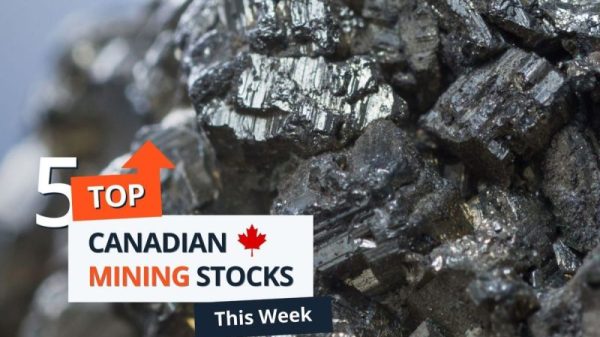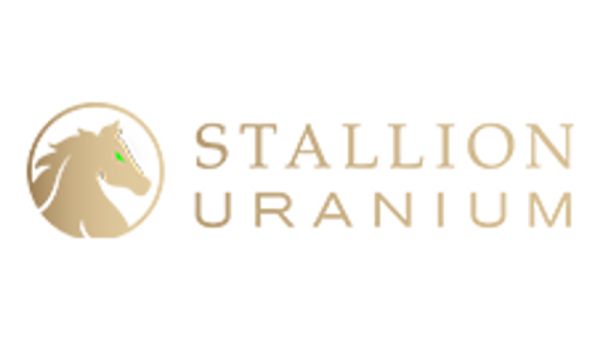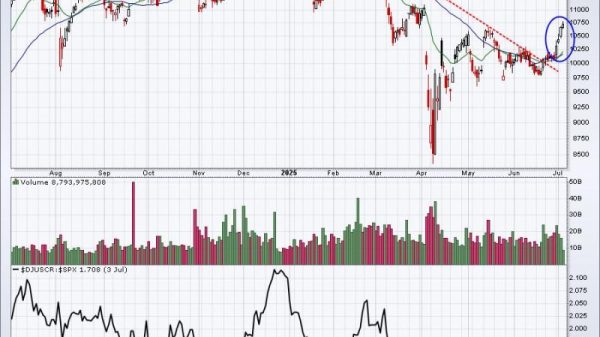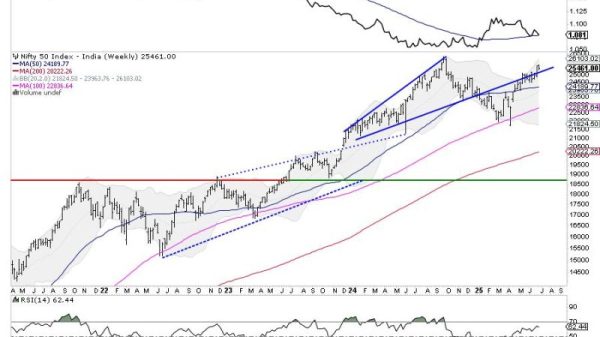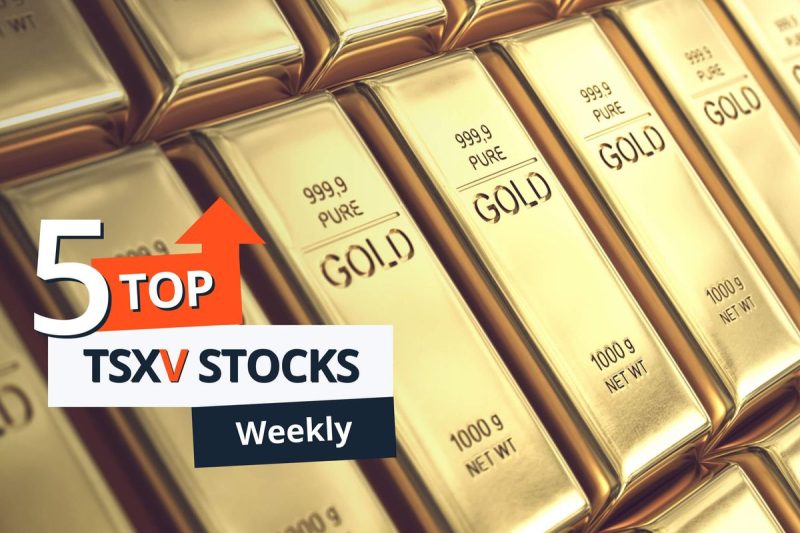The S&P/TSX Venture Composite Index (INDEXTSI:JX) gained 3.38 points last week to close at 587.71.
The Bank of Canada announced on Wednesday (April 10) that it will hold its benchmark lending rate at 5 percent. It has now maintained that level for six consecutive meetings as it works to bring inflation down to its 2 percent target.
The bank’s statement indicates that it believes inflation is moving in the right direction and is confident that it will be able to lower rates this year; this echoes language used by the US Federal Reserve at its March meeting.
The Bank of Canada had been expected to follow the Fed in cutting rates, with the first predicted to come in June. However, this week’s US consumer price index (CPI) data came in hotter than expected, and has sparked speculation that the American central bank won’t cut until later in 2024. The month-on-month seasonally adjusted increase for all-items CPI came in at 0.4 percent, the same as February, with a yearly increase of 3.5 percent. Analysts had widely been expecting a monthly increase of 0.3 percent and a 3.4 percent rise on a yearly basis.
The news had little impact on precious metals, with gold continuing to soar past US$2,400 per ounce. Silver also saw significant gains this past Thursday (April 11) as it broke through US$28 per ounce for the first time since 2020.
While gold and silver rose following the release of the CPI data, the Dow Jones Industrial Average (INDEXDJX:.DJI), Nasdaq Composite (INDEXNASDAQ:.IXIC), S&P 500 (INDEXSP:.INX) and S&P/TSX Composite Index (INDEXTSI:OSPTX) all saw declines, with the TSX Venture hovering around the breakeven point at the end of the week.
How have these events affected small-cap resource stocks? These are the top five gainers for the week.
1. Juggernaut Exploration (TSXV:JUGR)
Weekly gain: 55.56 percent; market cap: C$10.28 million; current share price: C$0.14
Juggernaut Exploration is an exploration company with three gold-copper projects in BC, Canada: the 20,803 hectare Midas project and 9,852 hectare Empire project, and the Golden Triangle-based 1,008 hectare Bingo project.
Juggernaut completed drill programs at Midas and Bingo last summer and released assay results in December.
The company said that when combined with results from previous years, the fresh results from drilling at Midas indicate an extensive trend of gold, copper and zinc mineralization. As for Bingo, an inaugural 12 day drill program at the site encountered multiple sulfide-rich intervals. Juggernaut highlighted an interval at Midas of 2.4 grams per metric ton (g/t) gold, 6.83 g/t silver, 0.18 percent copper and 1.04 percent zinc over 4.8 meters, as well as an interval at Bingo of 7.57 g/t gold, 20.23 g/t silver and 2.72 percent copper over 5.11 meters.
The most recent announcement from Juggernaut came on Tuesday (April 9), when it announced that due to strong support it has increased its non-brokered financing to up to C$1 million. It also said Crescat Capital has agreed to increase its ownership stake in Juggernaut to 19.97 percent after the funding.
2. Robex Resources (TSXV:RBX)
Weekly gain: 54.84 percent; market cap: C$198.35 million; current share price: C$2.40
Robex Resources is a gold development and mining company with operations in Africa. The company owns the Nampala mine in Mali, and in a release on January 22 it announced it achieved the top end of guidance for the mine in 2023, producing 51,826 ounces of gold. This was an 11 percent increase over its total output in 2022.
The company is currently developing its flagship Kiniero project in Guinea’s Siguiri Basin, which it acquired when it merged with Sycamore Mining in November 2022. Previous mining at the site between 2002 and 2014 extracted 418,000 ounces of gold. Robex is developing the project, and is currently working to build a new carbon-in-leach processing plant.
In a feasibility report released in June 2023, the company reported a projected life of mine of 9.5 years with expected production of 100,000 ounces of gold per year over the first seven years.
In a March 18 corporate update, the company said that due to deteriorating conditions and rising energy costs at its Nampala mine it is expecting to cease operations at the site in 2026. It also shared an updated timeline for Kiniero, including construction progress and a first pour estimate of December 2025.
Robex’s share price saw gains last week, but the company did not release any news.
3. PPX Mining (TSXV:PPX)
Weekly gain: 40 percent; market cap: C$38.17 million; current share price: C$0.07
PPX Mining is a precious metals company that is focused on its Igor project, which contains the operating Callanquitas underground mine, located in the Otuzco province of Northern Peru.
In a prefeasibility study for Igor, which was amended in January 2022, the company indicates that the 1,300 hectare site previously hosted small-scale mining operations and hosts a 50 MT per day gold-processing plant from the 1980s. PPX is currently working to upscale processing at the site through the construction of a 350 MT per day carbon-in-leach and flotation plant that will be used to process oxide and sulfide ore from Callanquitas.
An updated resource estimate for Callanquitas released by the company this past January shows measured and indicated amounts as oxides of 81,090 ounces of gold and 2.92 million ounces of silver. The inferred resource as sulfides stands at 20,760 gold ounces and 2.07 million silver ounces.
The company’s most recent news came this past Tuesday (April 9) when it announced that metallurgical testing on an oxidized breccia sample containing 12.05 g/t gold and 300.9 g/t silver over 5.25 meters had recovered 92.2 percent of the gold and 87.5 percent of the silver after being leached for 48 hours. Froth flotation tests were also carried out on sulfated vein material with grades of 10.3 g/t gold, 1,670 g/t silver and 4 percent copper over 9.2 meters; 97.1 percent of the gold, 94.8 percent of the silver and 96.1 percent of the copper were recovered.
4. Benz Mining (TSXV:BZ)
Weekly gain: 37.5 percent; market cap: C$27.03 million; current share price: C$0.22
Benz Mining is a gold and lithium explorer that has centered its efforts around two properties in Québec, Canada.
Its flagship Eastmain project is an 8,000 hectare property located in Central Québec within the Upper Eastmain Greenstone Belt. The site was originally explored in 1969 and produced briefly in 1995 before the gold price fell too low. A mineral resource estimate from May 2023 shows indicated resources of 384,000 ounces of gold from 1.3 million MT grading 9 g/t gold, with additional inferred resources of 621,000 ounces of gold from 3.8 million MT grading 5.1 g/t.
Benz also owns the Ruby Hill West lithium oxide project located 50 kilometers west of Eastmain. The company released results for 2023 drilling at the site in February, confirming a significant lithium-cesium-tantalum pegmatite system.
The company saw strong share price gains this past week, but did not release any news.
5. South Pacific Metals (TSXV:SPMC)
Weekly gain: 35.48 percent; market cap: C$10.99 million; current share price: C$0.42
Formerly Kainantu Resources, the company announced on February 6 that it would be changing its name to South Pacific Metals. It is a gold exploration company primarily focused on the advancement of its SPMC South project.
SPMC South is an early stage project located in a region of Papua New Guinea that is known for gold panning. The most recent exploration results from the project came in March 2023, when the company said 63 samples from the site had returned up to 1.55 g/t gold, 20.8 g/t silver, 0.39 percent copper and 460 parts per million molybdenum.
The company also owns three other gold projects in Papua New Guinea: SPMC North, May River and Kili Teke.
FAQs for TSXV stocks
What is the difference between the TSX and TSXV?
The TSX, or Toronto Stock Exchange, is used by senior companies with larger market caps, while the TSXV, or TSX Venture Exchange, is used by smaller-cap companies. Companies listed on the TSXV can graduate to the senior exchange.
How many companies are listed on the TSXV?
As of September 2023, there were 1,713 companies listed on the TSXV, 953 of which were mining companies. Comparatively, the TSX was home to 1,789 companies, with 190 of those being mining companies.
Together the TSX and TSXV host around 40 percent of the world’s public mining companies.
How much does it cost to list on the TSXV?
There are a variety of different fees that companies must pay to list on the TSXV, and according to the exchange, they can vary based on the transaction’s nature and complexity. The listing fee alone will most likely cost between C$10,000 to C$70,000. Accounting and auditing fees could rack up between C$25,000 and C$100,000, while legal fees are expected to be over C$75,000 and an underwriters’ commission may hit up to 12 percent.
The exchange lists a handful of other fees and expenses companies can expect, including but not limited to security commission and transfer agency fees, investor relations costs and director and officer liability insurance.
These are all just for the initial listing, of course. There are ongoing expenses once companies are trading, such as sustaining fees and additional listing fees, plus the costs associated with filing regular reports.
How do you trade on the TSXV?
Investors can trade on the TSXV the way they would trade stocks on any exchange. This means they can use a stock broker or an individual investment account to buy and sell shares of TSXV-listed companies during the exchange’s trading hours.
Data for this 5 Top Weekly TSXV Performers article was retrieved at 1:00 p.m. PST on April 5 2024, using TradingView’s stock screener. Only companies with market capitalizations greater than C$10 million prior to the week’s gains are included. Companies within the non-energy minerals and energy minerals were considered.
Article by Dean Belder; FAQs by Lauren Kelly.
Securities Disclosure: I, Dean Belder, hold no direct investment interest in any company mentioned in this article.
Securities Disclosure: I, Lauren Kelly, hold no direct investment interest in any company mentioned in this article.


